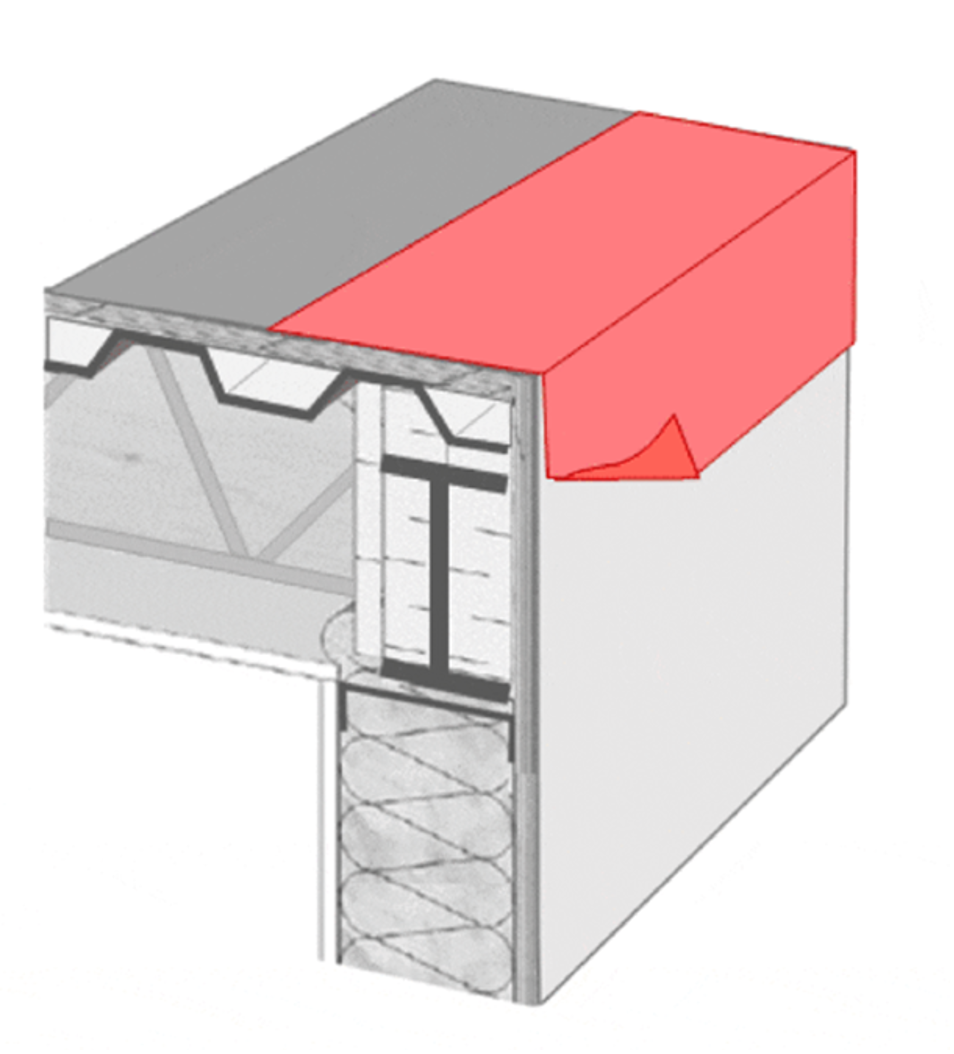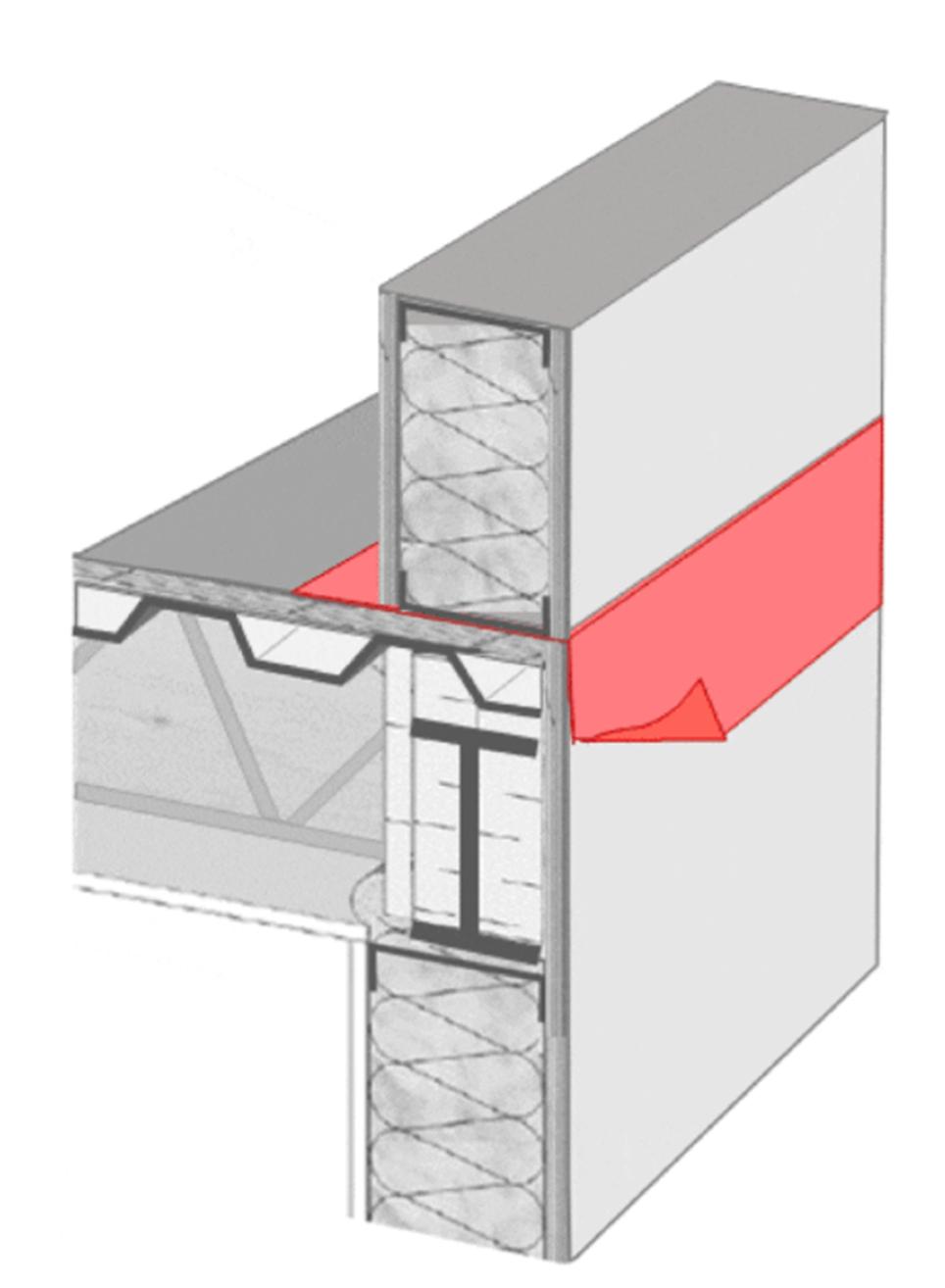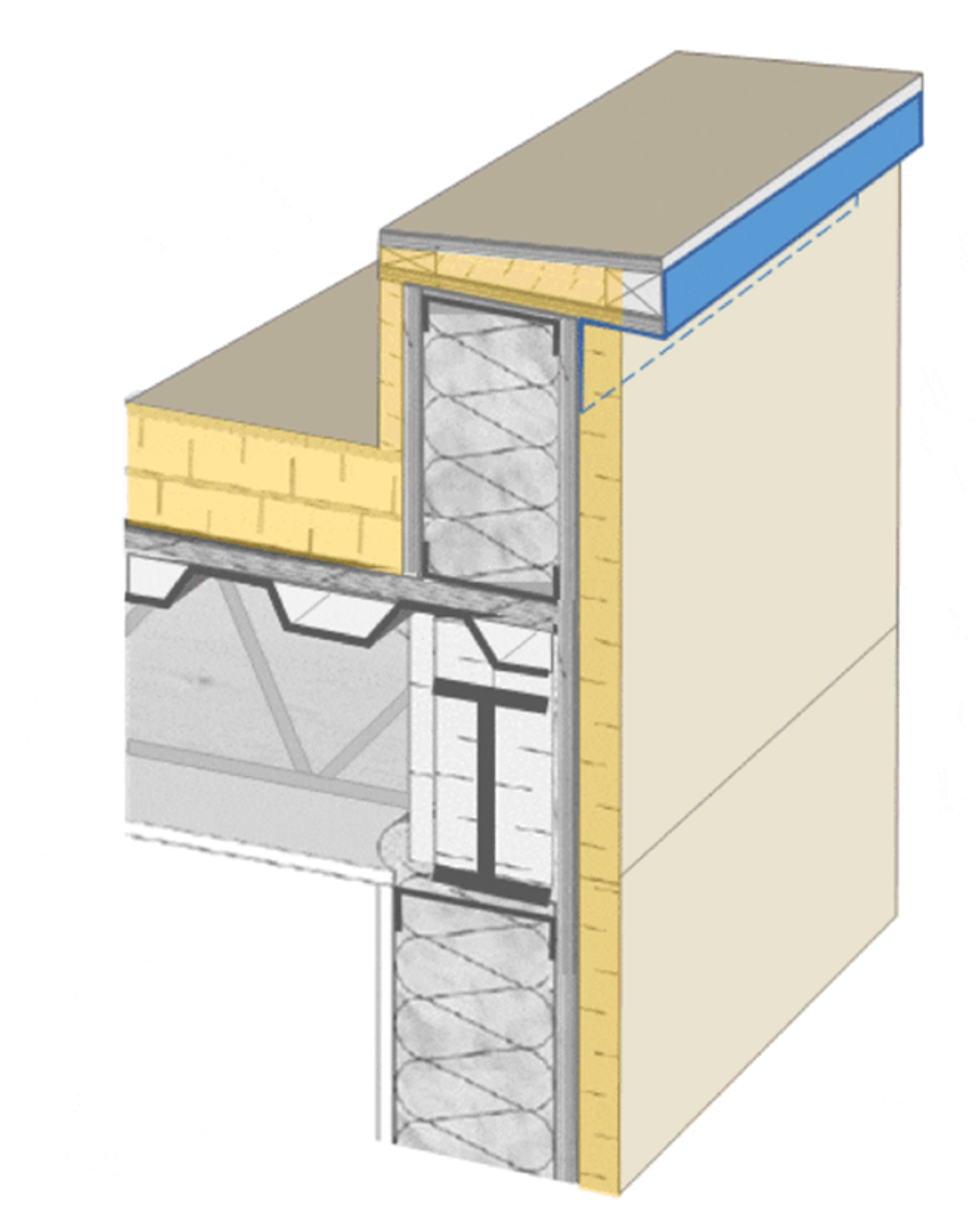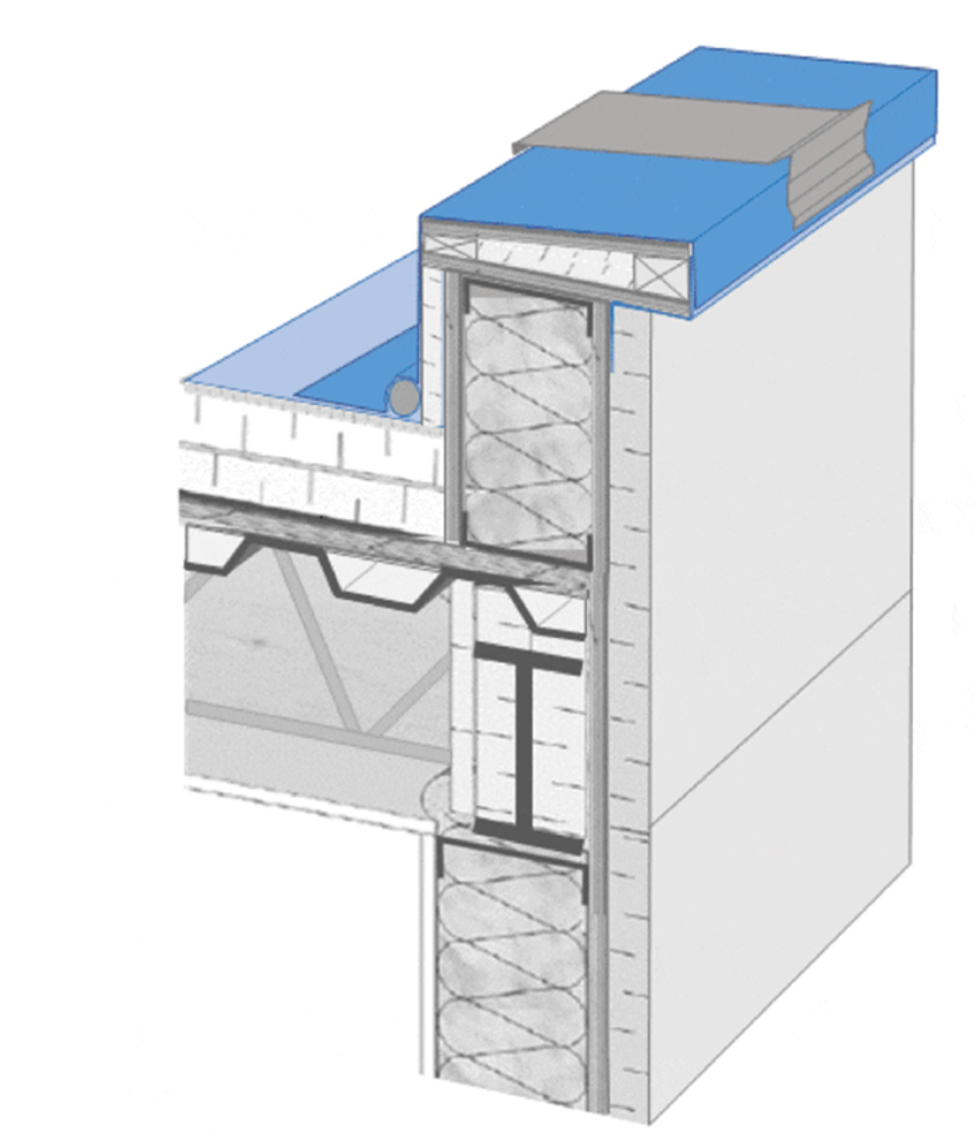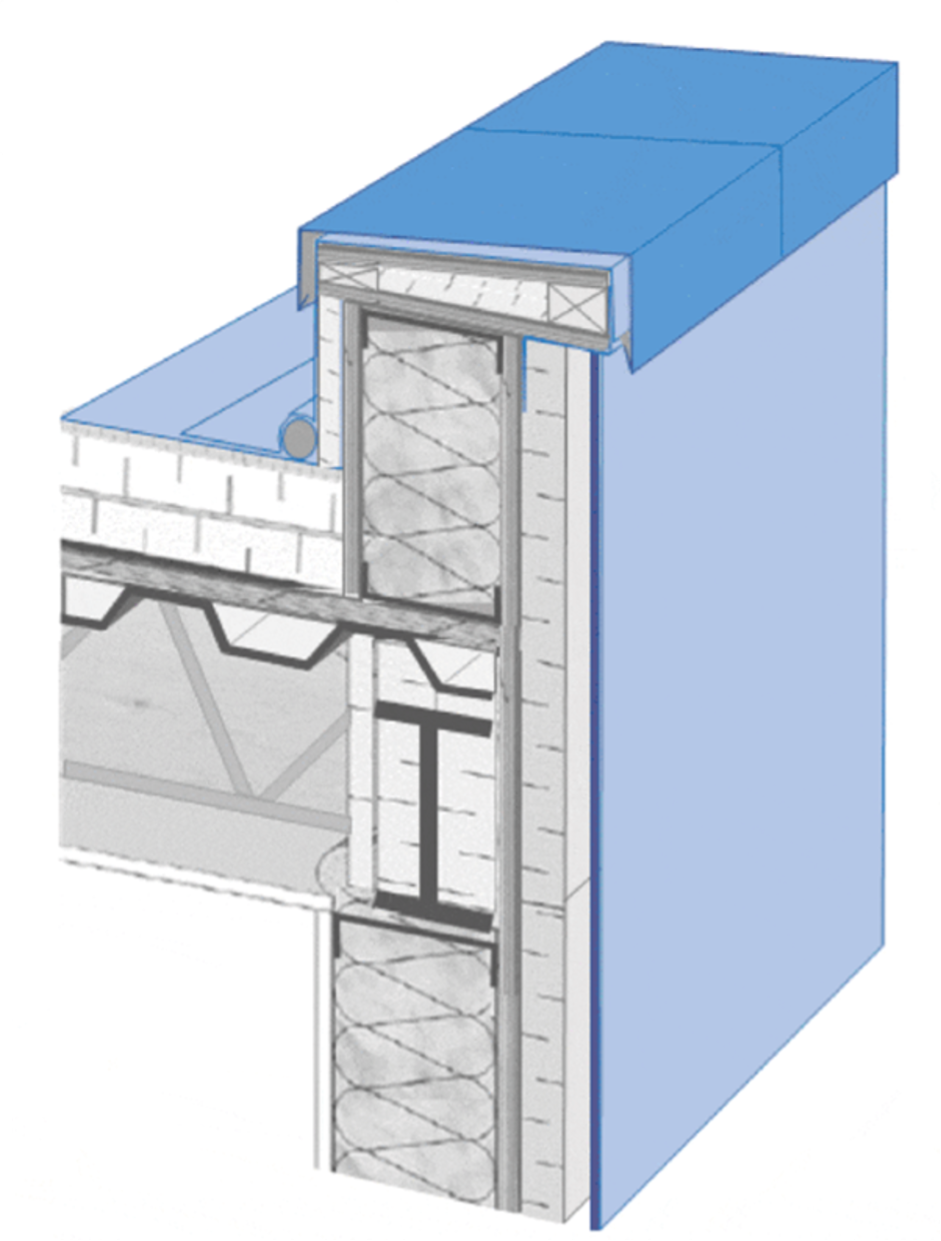Risky Business
Defining Continuity
The four key control layers (water, air, thermal, and vapor) should generally be continuous across all six sides of the building enclosure. The “pen test”—tracing each of the control layers around the building enclosure—is a helpful tool to design and communicate the intent of the critical components and functions of the building enclosure. The “pen test” is relatively easy in theory, but it can get complicated when the designer factors in the control layers at each condition, penetration, and transition. The pen test should be performed not only on the plans and elevations, but on the interface detail drawings where multiple materials and trades intersect.
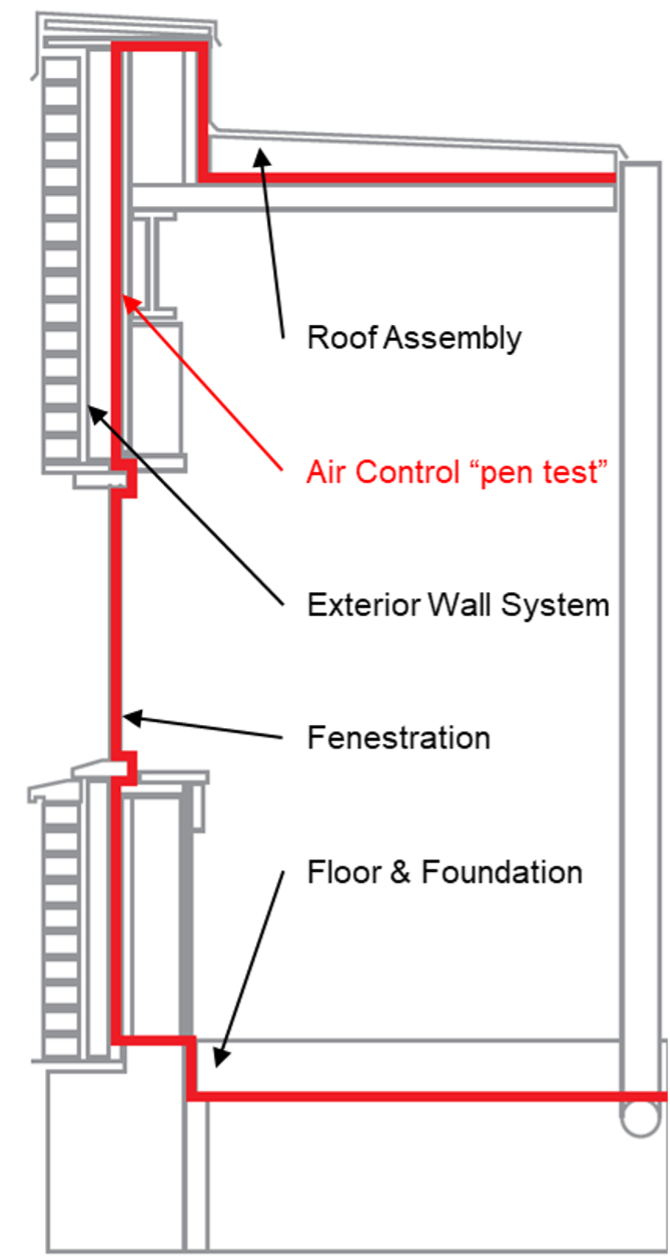
Image courtesy of GAF
Example of a “pen test” shown, as a red continuous line is drawn across building envelope elements to verify no gaps exist.
Identifying and maintaining continuity of the four key control layers is important in the design phase. Detailing and identification of the control layers in the drawings is critical to ensuring that the design intent is implemented in the field. This can require the design and specification callouts to be very specific. If the sequencing of components or trades in the field impacts the intended continuity or performance of the control layer in the design, it needs to be addressed before construction starts to prevent rework.
At a critical interface like a parapet, proper detailing, installation coordination, and execution are paramount. Control layer discontinuities can lead to failures in the field. For instance, air leakage can lead to concealed condensation and interior moisture damage.
Low-Slope Roofs and Wall Air Barrier Assemblies
One problem confronting the design professional is that there are lots of ways to accomplish performance goals for the building. The questions of how to design and sequence the control layers to prevent issues in the building are not simple. The building code can further complicate the picture, as it requires both ambiguous and specific things. For example, air and thermal barriers need to be continuous. Exterior walls and roof assemblies requirements are separated, but flashing requirements tie them together.
The International Energy Conservation Code (IECC) is a building code created by the International Code Council in 2000. It is a model code adopted by many state and local jurisdictions in the United States for the establishment of minimum design and construction requirements related to energy efficiency. In 2012, the IECC first published air barrier requirements which state that “continuous air barriers shall be provided throughout the building envelope.” There are exceptions to this requirement, but these are diminishing with each new version of the code.
There are three ways of achieving compliance with air barrier requirements:
- Materials (i.e. prescriptive)—the IECC published a list of materials they consider to be air barriers. Materials not on the list must be tested and shown to have an air permeance ≤ 0.004 cfm/ft2 under pressure differential of 0.3 in. water gauge (w.g.) tested in accordance with ASTM E 2178.
- Assemblies—assemblies consist of materials and components (sealants, flashing, etc.) that when put together can create a continuous air barrier, inclusive of penetrations. An average air permeance ≤ 0.04 cfm/ft2 under pressure differential of 0.3 in. w.g. tested in accordance with ASTM E 2357, 1677, or 283 is required.
- Whole building airtightness testing—the air leakage rate of a completed building enclosure can be tested and confirmed to be ≤ 0.40 cfm/ft2 at a pressure differential of 0.3 in. w.g. per ASTM E779, ASTM E3158 or equivalent method approved by a code official. Whole building airtightness testing will no longer be just an option for most buildings starting with the 2024 IECC, making the continuity of the air control layer even more critical to a building’s success.
The use of vapor retarders in low-slope roof assemblies will determine how the different control layers are detailed at transitions and at the roof-to-wall interface. All vapor retarders prevent air movement, but not all air barriers stop vapor diffusion. That means that when design professionals designate the use of a vapor retarder in a roof system, that retarder is also acting as an air barrier. The caution when using the vapor retarder as the air control layer is that the vapor retarder needs to be sealed at all perimeters and penetrations in order to perform as part of the air barrier assembly. It needs to be flashed and sealed to the wall air barrier, so air does not penetrate the interface. Practically speaking, all vapor retarders are air barriers if they are installed continuously and sealed to block the passage of air.





